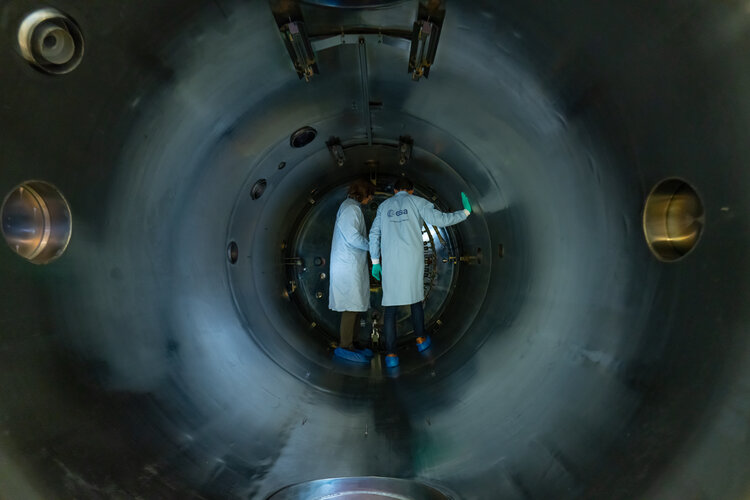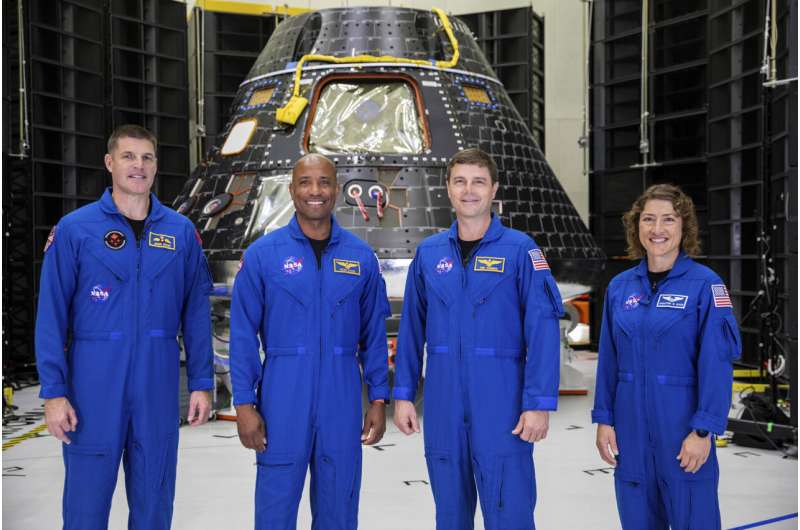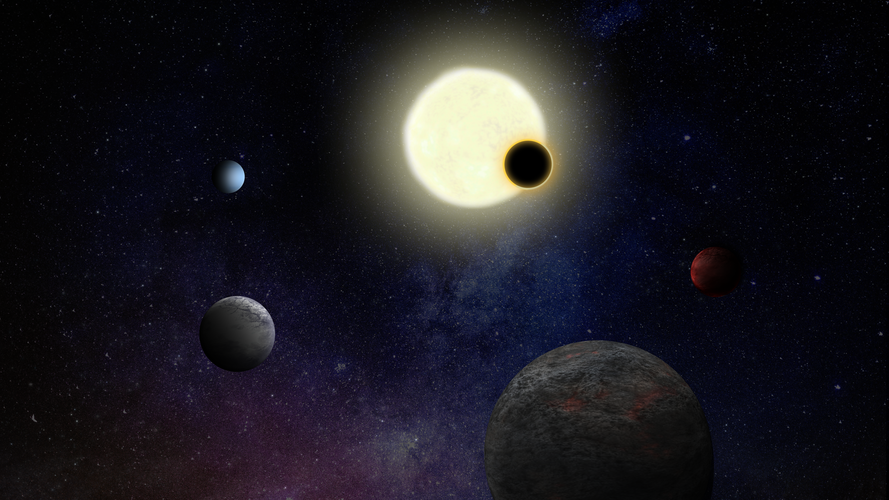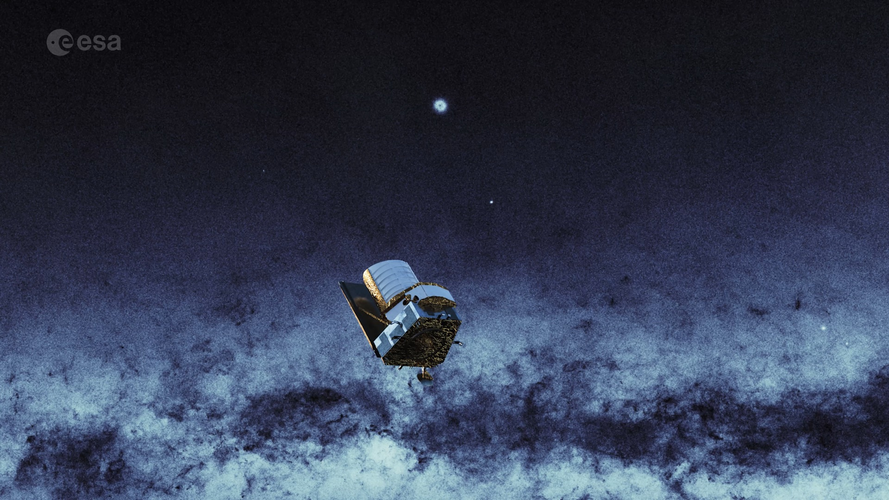
Copernical Team
Ingenuity flies again after unscheduled landing
 The helicopter performed a short hop to help the team better understand why its previous flight was interrupted.
NASA's Ingenuity Mars Helicopter successfully completed its 54th flight on Aug. 3, the first flight since the helicopter cut its July 22 flight short. The 25-second up-and-down hop provided data that could help the Ingenuity team determine why its 53rd flight ended early.
The helicopter performed a short hop to help the team better understand why its previous flight was interrupted.
NASA's Ingenuity Mars Helicopter successfully completed its 54th flight on Aug. 3, the first flight since the helicopter cut its July 22 flight short. The 25-second up-and-down hop provided data that could help the Ingenuity team determine why its 53rd flight ended early. India's moon mission takes another big step
 The injection of Chandrayaan-3 into the lunar orbit and the subsequent moves marked a major milestone in India's ambitious $75-million lunar mission, experts said.
The Indian Space Research Organisation, or ISRO, on Sunday completed the Lunar-Orbit Insertion to put the Chandrayaan-3 spacecraft into the moon's orbit.
The spacecraft carrying the Moon Mission-3 is expected to land on th
The injection of Chandrayaan-3 into the lunar orbit and the subsequent moves marked a major milestone in India's ambitious $75-million lunar mission, experts said.
The Indian Space Research Organisation, or ISRO, on Sunday completed the Lunar-Orbit Insertion to put the Chandrayaan-3 spacecraft into the moon's orbit.
The spacecraft carrying the Moon Mission-3 is expected to land on th InSight study finds Mars is spinning faster
 Data sent by the spacecraft before it retired last December has provided new details about how fast the planet rotates and how much it wobbles. Scientists have made the most precise measurements ever of Mars' rotation, for the first time detecting how the planet wobbles due to the "sloshing" of its molten metal core. The findings, detailed in a recent Nature paper, rely on data from NASA's InSig
Data sent by the spacecraft before it retired last December has provided new details about how fast the planet rotates and how much it wobbles. Scientists have made the most precise measurements ever of Mars' rotation, for the first time detecting how the planet wobbles due to the "sloshing" of its molten metal core. The findings, detailed in a recent Nature paper, rely on data from NASA's InSig A frosty anniversary weekend for Curiosity: Sols 3909-3911
 Earth planning date: Friday August 4, 2023: We're planning a special weekend today - Saturday is the 11th (Earth) anniversary of Curiosity's landing! I was newly graduated from high school when I watched Curiosity touch down, and it still seems surreal sometimes that I get to be part of a mission I followed with such fascination back then.
We have an exciting anniversary (or 'landiversary'
Earth planning date: Friday August 4, 2023: We're planning a special weekend today - Saturday is the 11th (Earth) anniversary of Curiosity's landing! I was newly graduated from high school when I watched Curiosity touch down, and it still seems surreal sometimes that I get to be part of a mission I followed with such fascination back then.
We have an exciting anniversary (or 'landiversary' Rocket Lab inks new deal to launch HASTE mission from Virginia
 Rocket Lab USA, Inc. (Nasdaq: RKLB) has signed a new launch services agreement with a confidential customer for a HASTE (Hypersonic Accelerator Suborbital Test Electron) mission from Launch Complex 2 at Virginia's Mid-Atlantic Regional Spaceport within NASA's Wallops Flight Facility in 2024.
The contract signing with a new customer came just days after Rocket Lab successfully launched the
Rocket Lab USA, Inc. (Nasdaq: RKLB) has signed a new launch services agreement with a confidential customer for a HASTE (Hypersonic Accelerator Suborbital Test Electron) mission from Launch Complex 2 at Virginia's Mid-Atlantic Regional Spaceport within NASA's Wallops Flight Facility in 2024.
The contract signing with a new customer came just days after Rocket Lab successfully launched the Advanced Space selected for two NASA SBIR Phase I Awards
 Advanced Space LLC., a leading space tech solutions company, is pleased to announce that NASA has selected two of our new Phase I concepts under the Small Business Innovation Research (SBIR) program.
The first project, won under the Flight Dynamics and Navigation Technologies subtopic, will support NASA's future efforts to design spacecraft trajectories for vehicles flying in cislunar spac
Advanced Space LLC., a leading space tech solutions company, is pleased to announce that NASA has selected two of our new Phase I concepts under the Small Business Innovation Research (SBIR) program.
The first project, won under the Flight Dynamics and Navigation Technologies subtopic, will support NASA's future efforts to design spacecraft trajectories for vehicles flying in cislunar spac Before the vacuum
 Image:
Before the vacuum
Image:
Before the vacuum Astronauts get first look at the spacecraft that will fly them around the moon

Exoplanet surveyor Ariel passes major milestone

Ariel, ESA’s next-generation mission to observe the chemical makeup of distant exoplanets, has passed a major milestone after successfully completing its payload Preliminary Design Review (PDR).
The Universe in a box: preparing for Euclid’s survey
 Video:
00:03:31
Video:
00:03:31
ESA’s Euclid mission will create a 3D-map of the Universe that scientists will use to measure the properties of dark energy and dark matter and uncover the nature of these mysterious components. The map will contain a vast amount of data, it will cover more than a third of the sky and its third dimension will represent time spanning 10 billion years of cosmic history.
But dealing with the huge and detailed set of novel data that Euclid observations will produce is not an easy task. To prepare for this, scientists in the Euclid Consortium have

































